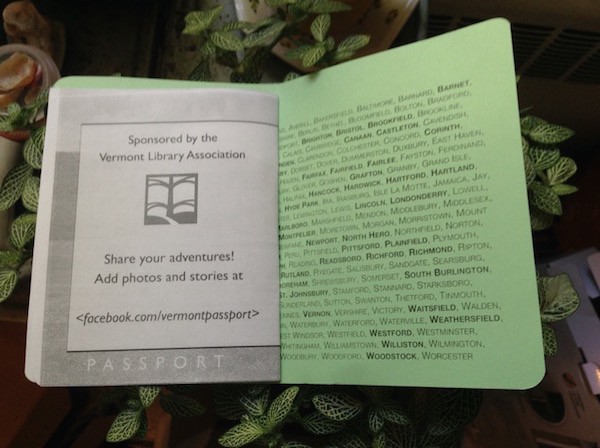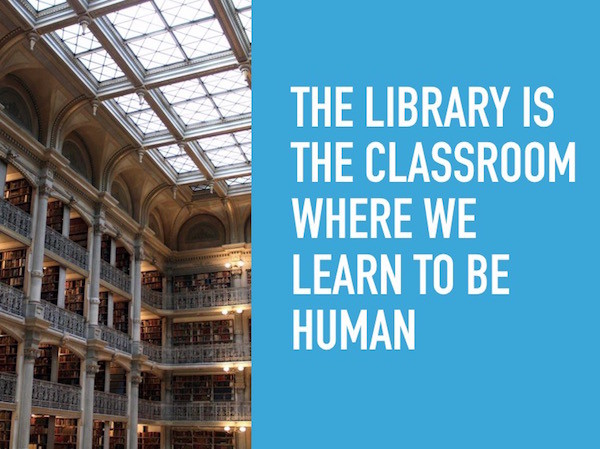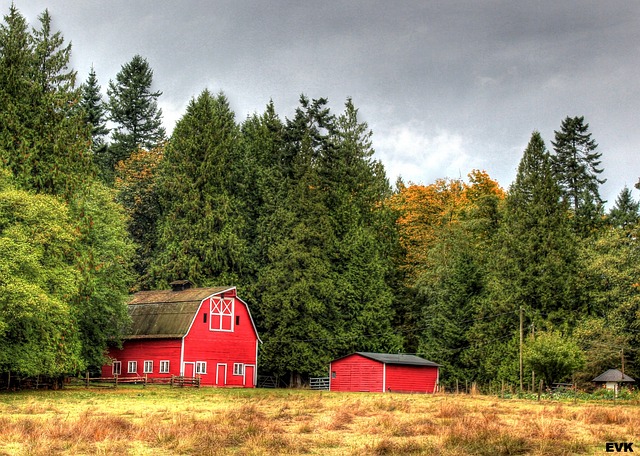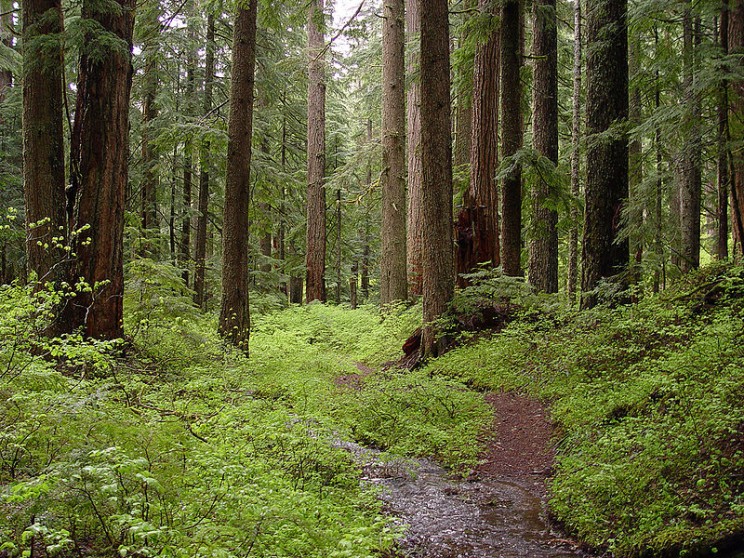Paul Feig’s Ghostbuster’s remake has made waves on both sides of the Atlantic. As the original 1984 film set some significant action in the Stephen A. Schwarzman Building of the New York Public Library, we couldn’t help but indulge in a rifle through the archives of cinematic tributes to libraries.
The post From the archives: the top 5 movie scenes set in libraries appeared first on OUPblog.
Now that I’ve stopped being webinar-resistant (I thank lots of meditation and more free time), I’ve been enjoying getting to give a lot of different types of presentations. Thanks to the oddness of scheduling, I did two very different talks on Wednesday. The first one was for NCompass Live who does great continuing ed stuff, all of it available online for free. I talked about the Passport to Vermont Libraries program (program website) in depth for about an hour and took questions. Small crowd, maybe 14 people. No live-tweeting. Fun. They put their recordings up on YouTube and you can watch mine here.

The second talk was for the SJSU-sponsored Library 2.016 Worldwide Virtual Conference. Michael Stephens was putting this one together and I was one of five people on a joint keynote thing, so I had about eight minutes. To me eight minutes means “One big idea” and so I decided to take a critlib angle and talk about how the library just IS a classroom and what it means to learn in a less-structured environment. There were maybe 400 people logged into a somewhat hectic Blackboard environment. You can listen to the recorded talks here, but I extracted mine into an eight minute (somewhat clunky-sounding) video if you just want to check that one out. As always, my notes and slides are available on my website. This was a particularly good looking set of slides if I do say so myself. This image is the catchphrase that seemed to scoot around the Twitters.

As always, it was really fun to get to interact with listeners (in both situations) and get to see what other people are jazzed about and talking about.
By Frank S. Gilliam
We benefit from forests in ways that go well beyond our general understanding. So, I would like to begin by suggesting that as we responsible citizens observe Arbor Day 2014, we look at forests as more than simply numerous trees growing in stands. Rather, we need to look at forests as ecosystems that are not only important in and of themselves, but also provide essential functions—so-called ecosystem services—to sustain the quality of human life.
For those not totally familiar with its beginnings, Arbor Day began in an area not usually thought as forested. In the 1870s, J. Sterling Morton and his wife moved to the Nebraska Territory (it was not yet a state at that time) and observed the paucity of trees relative to their Michigan roots. And so it was, as the first of more than one million trees were planted 10 April 1872 in the state of Nebraska, that Arbor Day was born. The Mortons’ perspectives greatly anticipated the environmental ethics of Aldo Leopold of the 20th Century—consider this quote from Morton: “Each generation takes the earth as trustees.” What a wonderfully profound sentiment regarding stewardship of nature and natural resources!

Although my family was not participating in an official Arbor Day activity at the time, I have a personal Arbor Day-like experience, one the benefits of which are reaped daily by my wife and me. We moved to our current home in Huntington, West Virginia in 1997, a time when our children were quite young. Now Huntington has the distinction of being the largest Tree City USA city in the state, according to the Arbor Day Foundation. That’s indeed quite notable, considering that West Viriginia is the 3rd most forested state (~77% forested) in the US, exceeded only by Maine (~86%) and New Hampshire (~78%) (Nebraska ranks 46th at ~2%). I took note of that immediately, seeing (primarily) oak trees throughout our new neighborhood. Not surprisingly, my children had never seen so many acorns that first fall, and I encouraged them to find one and plant it in the front yard. Nearly 20 years hence, we have a pin oak (Quercus palustris) as tall as our house, or more—all from that single acorn! That tree provides shade for the front of our house, mitigating summer heat, and it offers food and housing for animals, such as squirrels (and hummingbirds when we hang a feeder on the lower branches). It even allows us to plant shade-tolerant perennials, such as ferns, in our front yard.
But back to the ecosystem perspective. As ecosystems, forests provide a wide variety of services, all of which are essential in maintaining the quality of life on earth. They improve both air and water quality, and they provide some of the greatest biodiversity in the biosphere, comprising an impressive number of life forms and species. Indeed, forests are far more than just trees. Even plants as diminutive as those of the herbaceous layer—what one sees when looking down while walking in the forest—can play a role well beyond their apparent size. Despite its small physical stature, the herb layer comprises up to 90% of the plant diversity of the forest. I often refer to these plants collectively as “the forest between the trees.”

So, this Arbor Day 2014, we should all plant trees indeed! But as we do, let’s also keep in mind that our forests our essential to our own survival—and let’s treat them that way.
Frank Gilliam is a professor of biological sciences at Marshall University, and author of the second edition of The Herbaceous Layer in Forests of Eastern North America.
Subscribe to the OUPblog via email or RSS.
Subscribe to only earth, environmental, and life sciences articles on the OUPblog via email or RSS.
Image Credit: (1) Barn Red Landscape Clouds Trees Sky Nature Field. Public Domain via Pixabay. (2) Creek and old-growth forest-Larch Mountain. Public Domain via Wikimedia Commons.
The post Arbor Day: an ecosystem perspective appeared first on OUPblog.

As the year draws to a close, we’ve been reflecting on all the wonderful books published in 2011, and in doing so, we’ve also realized there are some classics worth revisiting. The authors and friends of Oxford University Press are proud to present this series of essays, which will appear regularly until the New Year, drawing our attention to books both new and old. Here regular OUPblog columnist Edward Zelinsky writes about My Antonia by Willa Cather.
The first time I read My Antonia, I hated it. That was to be expected: It was required reading in my sophomore English course at Omaha Central High. This was during the Sixties. In the Age of Aquarius, no one was supposed to like assigned reading. That’s why it had to be assigned.
I next confronted My Antonia in college. Like Jim Burden, Willa Cather’s narrator, I had left Nebraska to go to east to continue my education. During those years, some feminists were arguing for Cather’s place in the women’s canon. Thus, Antonia, the Nebraska icon, was to be transformed into Antonia, the feminist icon.
This didn’t seem quite right to me. As I reread My Antonia in college half a continent away from Nebraska, Cather’s portrayal of Nebraska seemed more appealing than it had when I had grown up there. And Antonia was too rich a character to serve anyone’s political agenda.
It was when my eleven year old daughter discovered My Antonia that I came full circle. Jacoba was blessed with a wonderful English teacher who guided her to read challenging novels. My Antonia became Jacoba’s favorite book. This prompted me to confront Cather’s most famous Nebraska novel once again.
This time, I was really hooked as I read of Antonia, her family’s travails and her ultimate triumph on the plains of Nebraska. This book, I declared, was good; it deserved to be taken off the required reading list.
The following year, when we visited my mother in Omaha, Jacoba asked if we could go to Red Cloud, Willa Cather’s hometown which she fictionalized in My Antonia as Black Hawk. I told my mother we were going to Red Cloud because Jacoba wanted to. That was partially true.
Our day in Red Cloud remains one of the best memories of raising my daughter. The citizens of Red Cloud are understandably proud as they guide visitors through the many Cather-related structures still standing.
At the end of the day, our guide gently walked us toward the cemetery where Antonia is buried. The small, picturesque graveyard was dotted with Nebraska sunflowers. Standing at Antonia’s grave was one of the genuinely peaceful moments of my life.
As I stood by Antonia’s grave, I realized that, like Jim Burden, I had gone east to be educated and live my life as a lawyer, but that I had forever left behind an important part of me in Nebraska.
A few years later, when Jacoba’s twin brothers reached Bar Mitzvah age, the synagogue in Connecticut was decorated with Nebraska sunflowers.
 Edward A. Zelinsky is the Morris and Annie Trachman Professor of Law at the Benjamin N. Cardozo School of Law of Yeshiva University. He is the author of The Origins of the Ownership Society: How The Defined Contribution Paradigm Changed America. His monthly column appears here.
Edward A. Zelinsky is the Morris and Annie Trachman Professor of Law at the Benjamin N. Cardozo School of Law of Yeshiva University. He is the author of The Origins of the Ownership Society: How The Defined Contribution Paradigm Changed America. His monthly column appears here.
View







